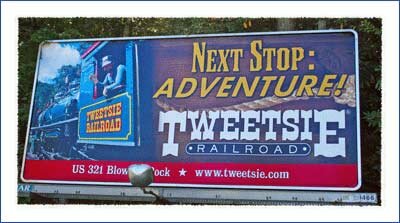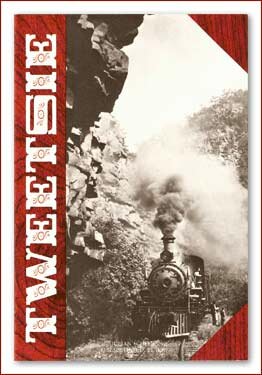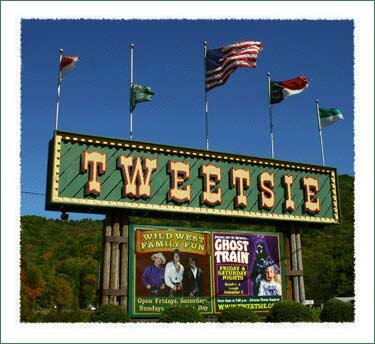
Tweetsie Railroad: Before it was an Amusement Park |

The ET & WNC Railroad (Tweetsie) was chartered by the Tennessee General Assembly in 1866 but the project lacked adequate financing and was dropped in 1874. The Cranberry (North Carolina) Iron company acquired the line in the late 1870s. The line was first built from Johnson City Tennessee to Hampton Tennessee and then to Cranberry by 1882. It hauled iron ore and lumber from western North Carolina. In 1913 they purchased the Linville River Railway and extended into Shull's Mill then Boone. In any history of the western North Carolina and East Tennessee regions you will read about the "Flood of 1940." That flood was the last straw for many of the railroad lines in the area. The railroads, already in financial trouble, refused to rebuild the tracks that were destroyed by that flood. That was the last time there was ever train service to Boone. The ET &WNC Railroad company ceased business altogether in 1950. (Note: The flood of 1940 also led to the Tennessee Valley Authority and Federal Government project to build Watauga Dam, thus destroying the town of Butler Tennessee and creating Watauga Lake. Click here to read more.) |

The Tweetsie Locomotive was purchased by a group in Virginia and moved to Harrisonburg, Virginia. When their plans to use it did not work out, movie star Gene Autry bought it but decided not to ship it to California. Ultimately a group from North Carolina purchased it and moved it to Blowing Rock to become the center of an amusement park there. Former Boone mayor Wade Brown, who grew up in Blowing Rock, recalls in his autobiography "Recollections and Reflections" the day they brought the Tweetsie locomotive up the mountain to Blowing Rock: "Finally, Grover Robbins, Jr. made a deal and bought the Tweetsie locomotive, took it to Hickory for reconditioning, and brought it up the mountain. I remember going up the highway with my daughters Margaret Rose and Sarah, to watch the train being brought in on what we call a lowboy, like they use to haul heavy machinery. A big truck or tractor pulled the front of the trailer and another one pushed it from behind, especially coming up the mountain, because it was a tremendously heavy load for the highway. |

Some interesting links related to this story : |
